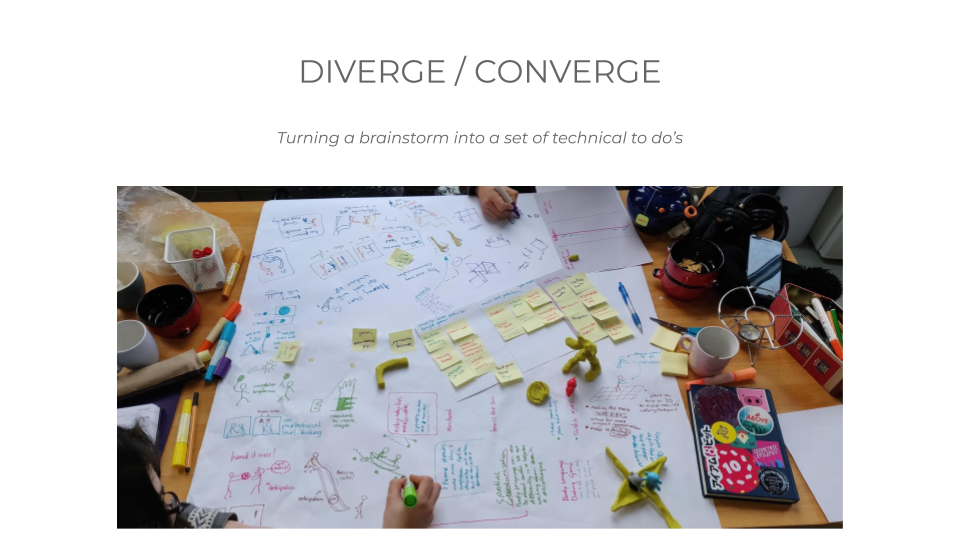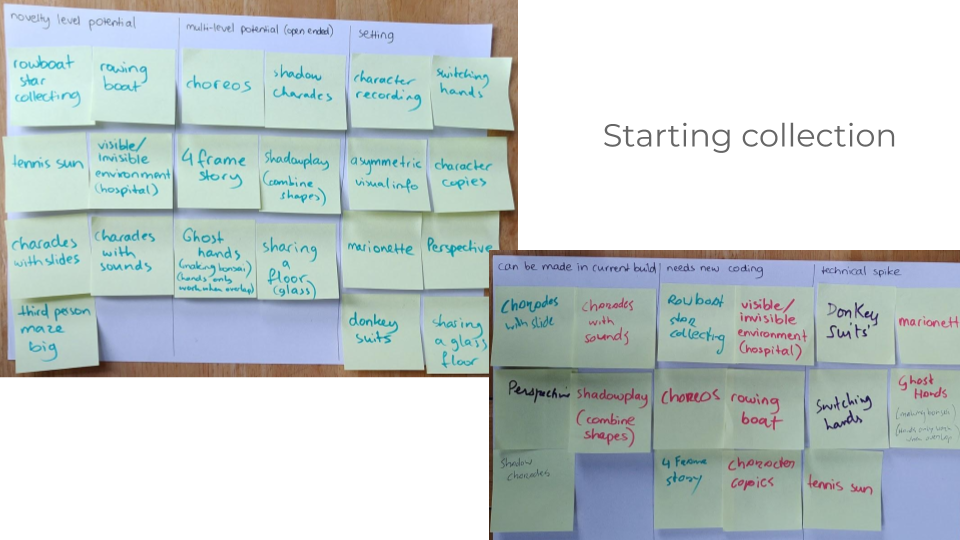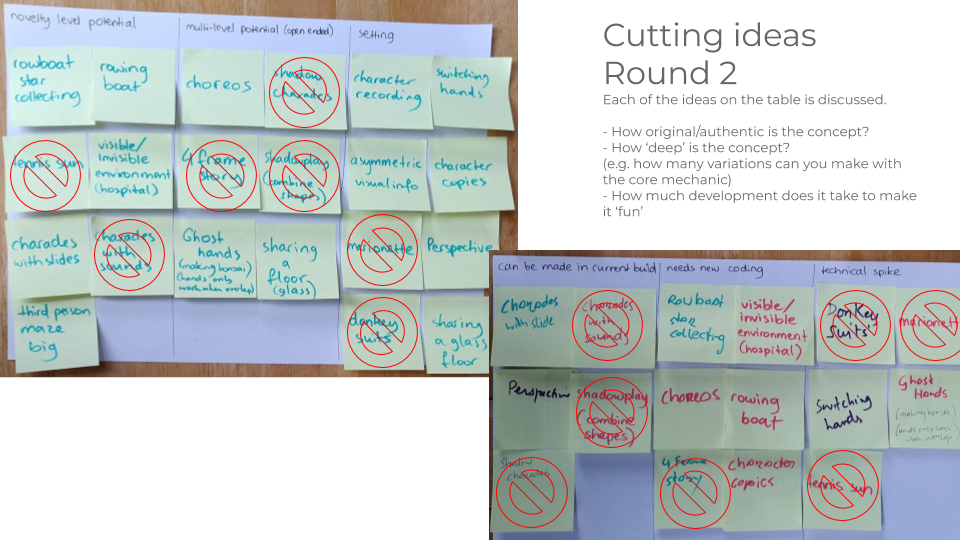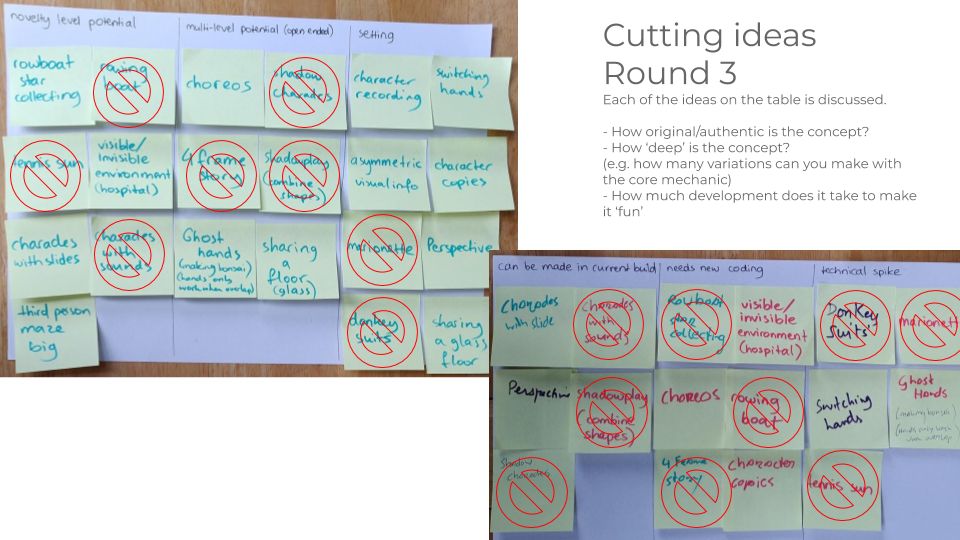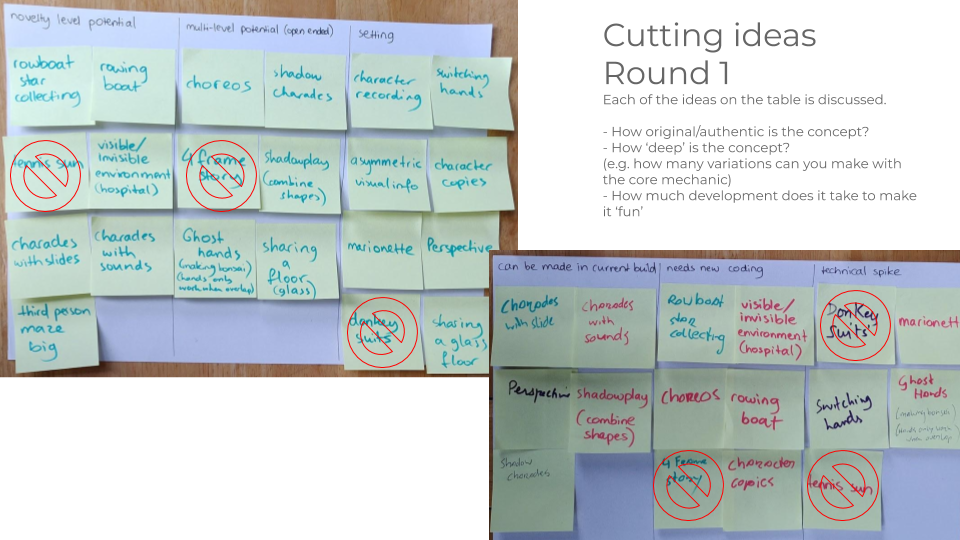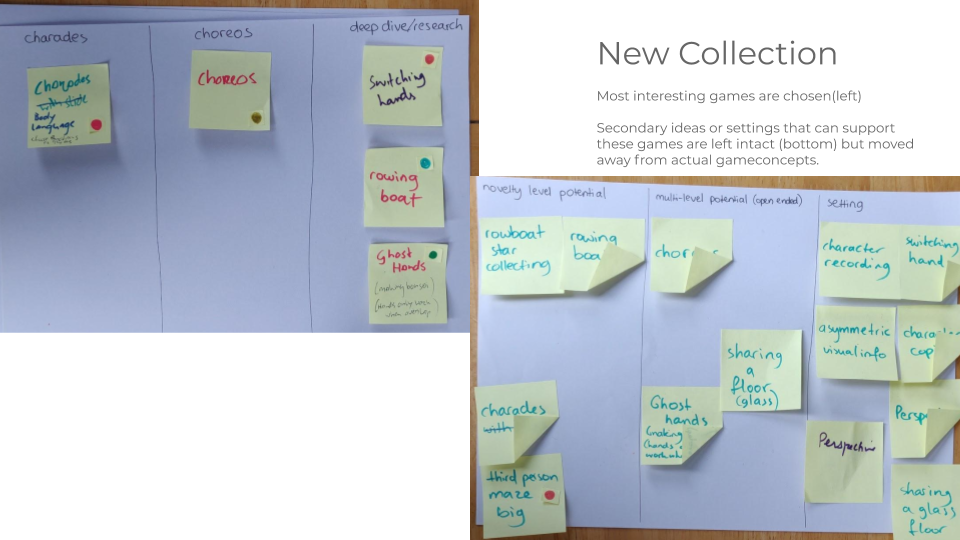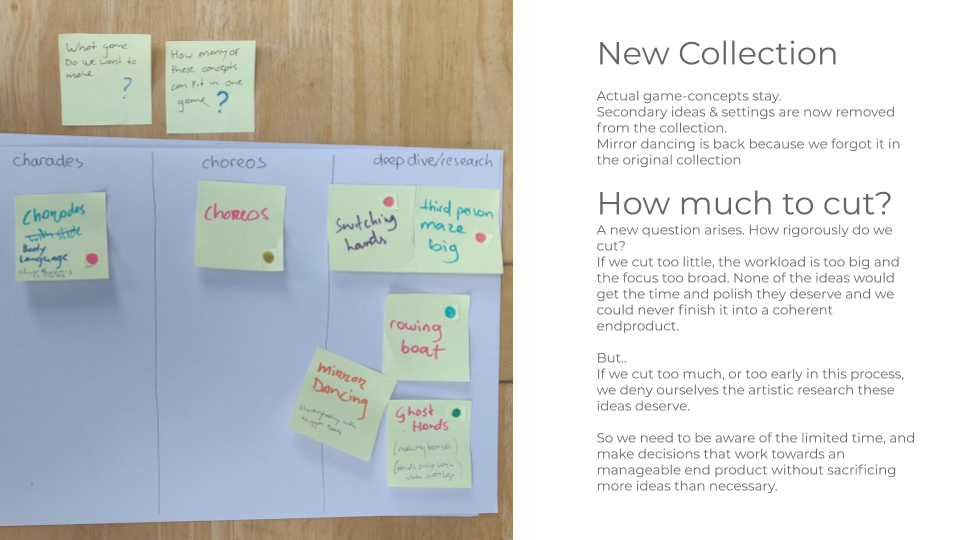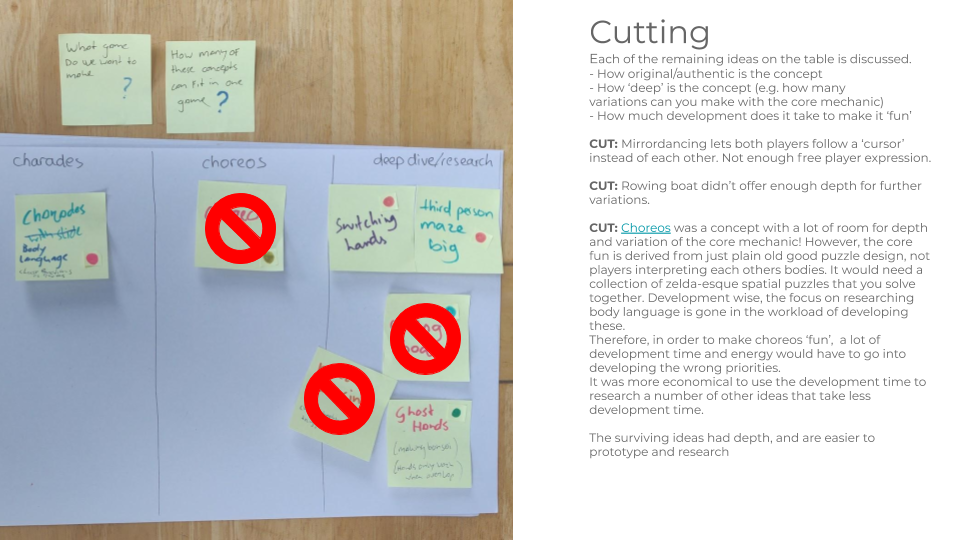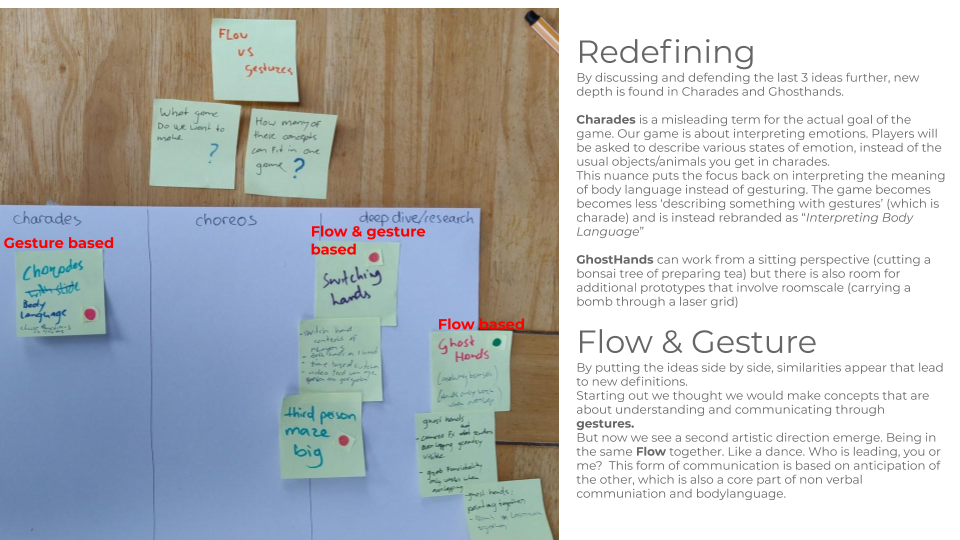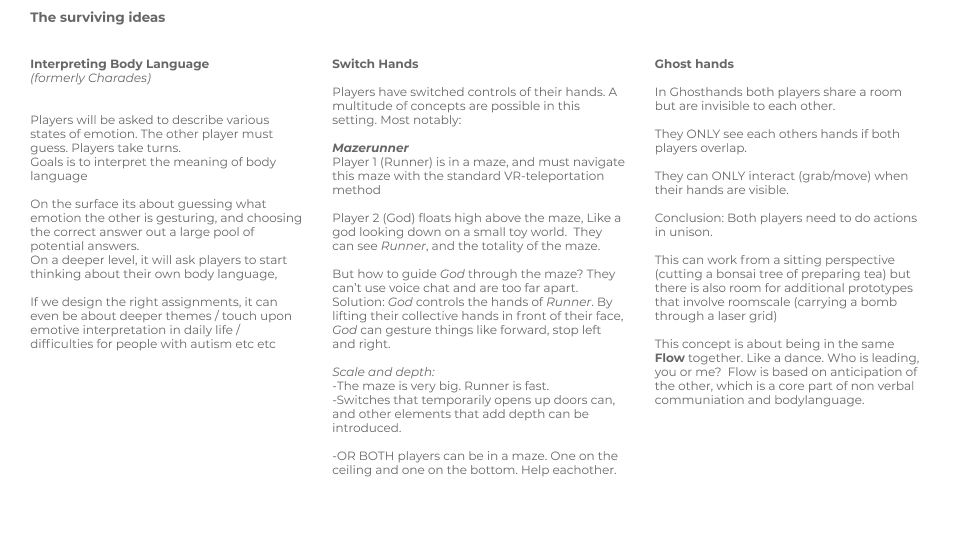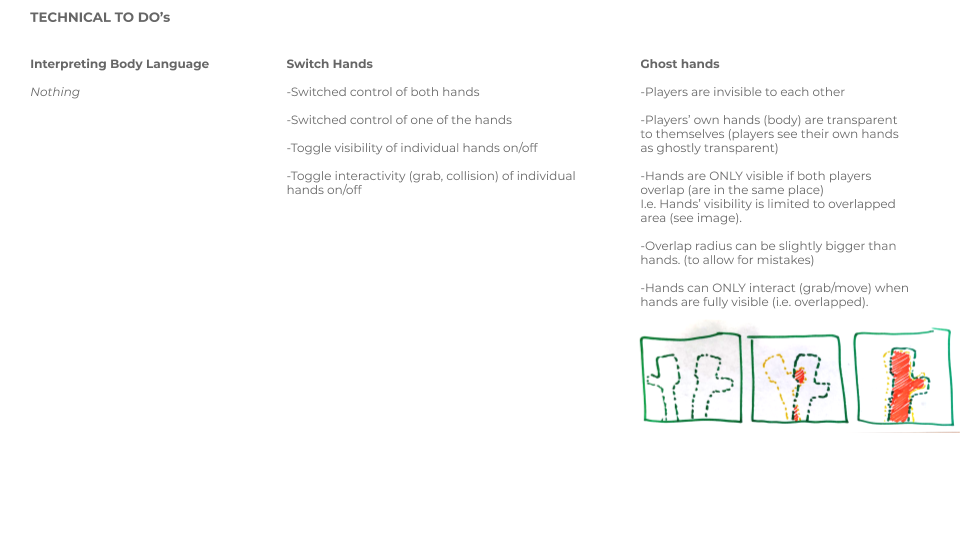In this series of blog posts, we will take you through the creative process behind Kinesics. This artistic research project explores the future role of body language in Virtual Reality. This is the fifth post in a series of ten.
After the residency period, it was time to evaluate the process so far and to set up further plans. The result of the brainstorm sessions with students proved to be fruitful. We covered a broad set of ideas and uncovered both ideas with potential, and more importantly, things that did not work. We collected our own ideas, together with the student ideas, and started evaluating them using the following criteria:
How ‘deep’ is the concept?
(e.g. how many variations can you make with the core mechanic)How much development does it take to make the core idea playable?
How accessible is the idea (can people play it without reading an explanation first)
Click this link to open the above slideshow full screen
The breakthrough came when we realised one of our initial ideas already had a lot of potential. Charades seemed to be an accessible and recognisable game for everyone. In normal Charades players guess words that are acted out in gestures by their teammates. Usually, this party game is played by guessing films, or specific actions. These assignments weren’t very helpful for us, as they are more about gesturing, and we were looking for concepts that would broaden the ways we could personally express ourselves in VR. It clicked when we realised that we could ask players to act out emotions. By asking people to physically act out emotions without facial expressions, we create more awareness of the role our own body plays in expressing our state of mind. We decided to make this our first prototype.
Decisions made
Instead of focusing on just one idea and turning that into a polished game, we gave ourselves the space to develop three prototypes. This was an important and conscious decision, because time and money are always limited. Dividing our attention over multiple prototypes meant that we would never be able to polish one idea to a level that is suitable for sale. But, we felt that focusing on just one idea this early in the process would defeat the purpose of this project - which is to conduct artistic research. We decided that sharing multiple rough prototypes and ideas with the world would be more beneficial, both in generating outside interest that would lead to new chances in the future, and allowing ourselves to gather more insights into the playful use of body language in virtual reality.
In our next post we’ll talk about the first prototype in making: ‘Charades”. This research was a collaboration with ImproVive and funded by Creative Industries NL.


